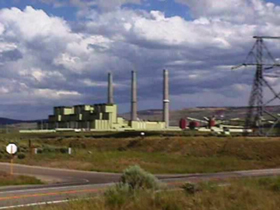|
|
|
Project
Experience |
|
| Project: |
SOCIO-ECONOMIC
ASSESSMENT ENTREGA GAS PIPELINE PROJECT |
|
|
| Location: |
Albany, Carbon, Laramie and Sweetwater Counties,
Wyoming and Moffat, Rio Blanco and Weld Counties, Colorado |
|
|
|
Client: |
Natural Resource Group, Inc
1000 IDS Center
800 South Eighth Street
Minneapolis, MN 55042 |
|
|
| Contact: |
Paul Benardczyk |
|
|
| Year Completed: |
2004 |
|
| Project Scope:
Natural Resource Group, Inc. (NRG),
a contractor to Entrega Gas Pipeline, Inc., based in Denver,
Colorado, is responsible for the preparation of an application
to the Federal Energy Regulatory Commission (FERC) for a planned
327-mile long interstate natural gas pipeline. The proposed
pipeline would extend from the Meeker Hub near the Town of
Meeker in Rio Blanco County, Colorado, to new interconnections
with Colorado Interstate Gas Company and Wyoming Interstate
Company near Wamsutter, Wyoming. From Wamsutter, the pipeline
would be constructed eastward to the Cheyenne Hub near Rockport
in Weld County, Colorado. NRG retained Pedersen Planning
Consultants to prepare a socio-economic assessment of this
project.
|
|
| To accomplish this project,
Pedersen Planning Consultants (PPC) evaluated the socio-economic
characteristics of the seven county area. These analyses
provided the context for a subsequent analysis of anticipated
governmental revenues to the states of Colorado and Wyoming, as
well as each of the seven counties. The primary revenue streams
examined included ad valorem, sales and use, lodging, and
severance taxes. PPC developed a statistical model to
facilitate the calculation of anticipated revenues and related
revisions during the course of overall project planning. |

Plant south of Craig, Moffat County, Colorado |
|
| PPC analyzed potential project
benefits to private landowners who might lease real property for
the construction of compressor stations, as well as temporary
contractor staging areas and pipeline yards. Potential impacts
upon local motels, RV campgrounds, and residential apartment
complexes were also calculated in the context of a construction
labor force of 1,200 workers that were dispersed into four
separate segments of the pipeline project. Potential temporary
housing demands were compared with the type and number of
available accommodations in each county.
PPC also examined potential
retail sales that would be derived from the expenditures made by
the construction labor force in each of the seven counties.
This evaluation considered the type of retail expenditures and
the type of retail establishments in each county. |
|
|